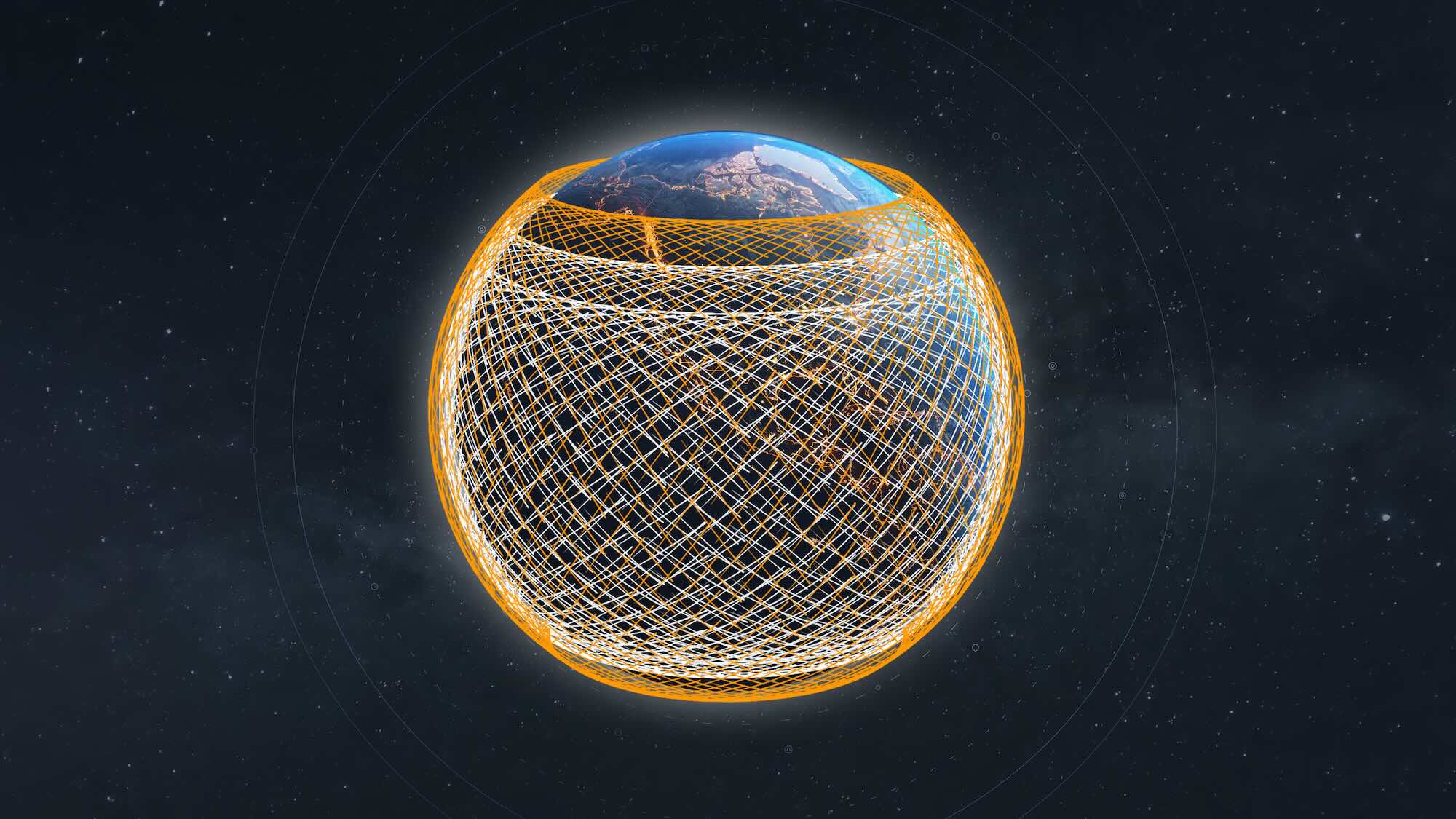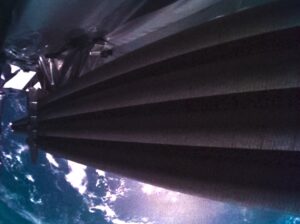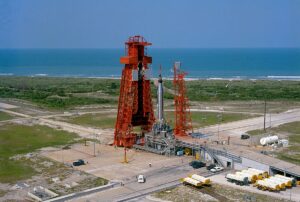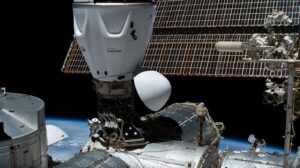
TAMPA, Fla. — Amazon has successfully tested inter-satellite links between its two Project Kuiper prototypes in low Earth orbit (LEO), the company announced Dec. 14 as it prepares to start filling out a mesh broadband network in space next year.
KuiperSat-1 and KuiperSat-2 used onboard optical communications payloads to maintain a two-way 100 gigabits per second (Gbps) link for around an hour at a time, Project Kuiper vice president Rajeev Badyal said in an interview.
The satellites were nearly 1,000 kilometers apart during the tests, but the technology is designed to work across distances up to 2,600 kilometers.
Amazon has plans for more than 3,200 satellites and Badyal said they would be packed much closer together than 1,000 kilometers once the constellation fills out.
The tests started in early November after launching to orbit a month before, and their success enables Amazon to add the laser links to operational satellites entering production “any day now.”
Each satellite is being built in-house and would be fitted with multiple optical terminals so it could contact an unspecified number of satellites simultaneously.
Space network benefits
According to Badyal, data could move across Project Kuiper satellites 30% faster than through fiber optical cables on the ground because light travels slower through glass than through space.
Speedy connections are important for industries such as financial services where stock trades are made within milliseconds.
Enabling data to hop from one satellite to the next on its way to a ground station is also important for maritime, aviation, and other sectors beyond the reach of terrestrial gateways.
SpaceX started adding optical inter-satellite links to its Starlink LEO broadband constellation in early 2021, initially so the company would not need to install ground stations over the poles to achieve global coverage.
A mesh network in space also greatly improves network resiliency, because data can be rerouted to bypass any satellite failures, and is a key part of other proposed constellations such as Telesat’s Lightspeed.
Badyal hailed its inter-satellite link demonstrations as a significant achievement for a company that started working on the ability to design and build satellites just five years ago.
“I don’t know if anyone [has] been able to demonstrate links for 60 minutes,” Badyal said, “and we could probably go longer.”
Amazon said Nov. 16 it had successfully completed end-to-end tests for KuiperSat-1 and KuiperSat-2, enabling production to start on satellites using the same architecture.
The company plans to start launching production satellites in the first half of 2024, leveraging contracts secured with United Launch Alliance, Arianespace, Blue Origin, and one recently agreed with SpaceX.
- SEO Powered Content & PR Distribution. Get Amplified Today.
- PlatoData.Network Vertical Generative Ai. Empower Yourself. Access Here.
- PlatoAiStream. Web3 Intelligence. Knowledge Amplified. Access Here.
- PlatoESG. Carbon, CleanTech, Energy, Environment, Solar, Waste Management. Access Here.
- PlatoHealth. Biotech and Clinical Trials Intelligence. Access Here.
- Source: https://spacenews.com/project-kuiper-prototypes-successfully-test-inter-satellite-optical-links/
- :has
- :is
- :not
- :where
- $UP
- 000
- 1
- 100
- 14
- 16
- 200
- 2021
- 2024
- 60
- 600
- a
- ability
- Able
- Achieve
- achievement
- across
- add
- adding
- After
- ago
- agreed
- Alliance
- also
- Amazon
- an
- and
- announced
- any
- anyone
- apart
- architecture
- ARE
- around
- AS
- At
- aviation
- BE
- because
- been
- before
- being
- between
- Beyond
- Blue
- blue origin
- broadband
- build
- built
- but
- cables
- CAN
- closer
- Communications
- company
- Completed
- Connections
- contact
- contracts
- could
- coverage
- data
- day
- dec
- demonstrate
- Design
- designed
- Dont
- during
- Early
- earth
- enables
- enabling
- end-to-end
- entering
- failures
- faster
- filling
- fills
- financial
- financial services
- First
- five
- For
- from
- glass
- Global
- Go
- greatly
- Ground
- had
- Half
- hour
- HTTPS
- if
- important
- improves
- in
- industries
- initially
- install
- Interview
- IT
- ITS
- jpg
- just
- Key
- Know
- laser
- launch
- launching
- LEO
- leveraging
- light
- lightspeed
- LINK
- links
- longer
- Low
- made
- maintain
- Maritime
- mesh
- Mesh network
- milliseconds
- minutes
- Month
- more
- move
- much
- multiple
- nearly
- Need
- network
- next
- nov
- November
- now
- number
- of
- on
- Onboard
- once
- ONE
- operational
- Orbit
- Origin
- Other
- out
- over
- packed
- part
- per
- plans
- plato
- Plato Data Intelligence
- PlatoData
- Prepares
- president
- probably
- Production
- project
- proposed
- prototypes
- reach
- recently
- Said
- same
- satellite
- satellites
- Second
- Sectors
- Secured
- Services
- significant
- simultaneously
- So
- Space
- starlink
- start
- started
- station
- Stations
- stock
- success
- Successfully
- such
- Technology
- terminals
- terrestrial
- test
- tested
- tests
- than
- that
- The
- their
- they
- Through
- time
- to
- together
- trades
- travels
- two
- United
- used
- using
- vice
- Vice President
- Way..
- we
- were
- with
- within
- Work
- working
- would
- year
- years
- zephyrnet







